
Awards Presented at the 2010 Annual Convention
DON R. BOYD MEDAL FOR EXCELLENCE IN GULF COAST GEOLOGY
GROVER E. MURRAY BEST PUBLISHED PAPER AWARDS
2009 A. I. LEVORSEN MEMORIAL AWARD
Edward C. Roy, Jr.
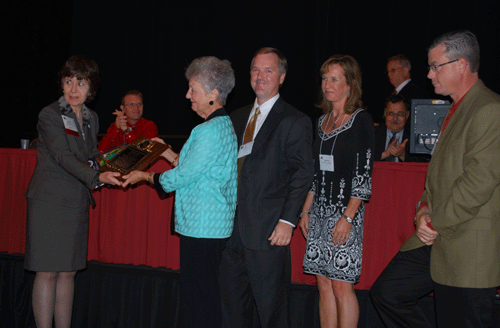
Family of Edward C. Roy, Jr.
The South Texas Geological Society, host of the 2010 convention of the Gulf Coast Association of Geological Societies and the Gulf Coast Section of SEPM are proud to dedicate Volume 60 of the Transactions in memory of Edward C. Roy, Jr.
On Friday, November 9, 2007, the geological community lost a gifted leader, educator, scientist, and friend with the passing of Dr. Edward C. Roy, Jr. The writers of this dedication had the pleasure and honor of working with Ed during much of his career at Trinity University, and we saw first-hand Ed’s commitment to excellence in the performance of all his responsibilities. Ed’s achievements continue to provide an outstanding role model embodying for all of us the values of dedication, outreach, optimism, and a job well done.
Ed received both his B.Sc. with High Distinction in Geology in 1961 and his Ph.D. in Geology in1964 from Ohio State University. Upon graduation, he joined Shell Oil Company first in Corpus Christi, and then in Houston. In 1966, he accepted a position in the Department of Geology at Trinity University in San Antonio, and served Trinity University in diverse positions from that time to his death in 2007. Ed’s exceptional teaching skills won him the Outstanding Professor Award during his first year of service at Trinity University. Ed’s commitment to science education is a hallmark of his career and included many groups of students of all ages. Ed believed that if you want students to choose geology as a career, then you need to instill that interest within them as early as possible.
Ed rose through the teaching ranks and served as Chair of the Trinity University Department of Geology from 1978 to 1984. Moving into higher administrative positions at the University, he became Dean of Sciences, Mathematics, and Engineering in 1986, and then Vice President for Academic Affairs from 1987 to 1999. Ed then returned to the renamed Department of Geosciences as the Gertrude and Walter Pyron Distinguished Professor of Geology. Although formally retired from Trinity in 2005, Ed simply moved his office to the Trinity Education Department, where he continued to mentor science students.
Ed actively promoted Earth Science in state-based curricula. In 2002, Ed was appointed by the head of the Texas Education Agency to chair the Earth Sciences Task Force, which was charged with establishing Earth Science as a core-science course in high school. His efforts were instrumental in the inclusion of Earth Science as a fourth-year high school course in Texas schools.
Ed believed that professional societies must play a key role in furthering professional development, and so he actively served the South Texas Geological Society (STGS), Gulf Coast Association of Geological Societies (GCAGS), American Association of Petroleum Geologists (AAPG), Society for Sedimentary Geology (SEPM), Geological Society of America (GSA), American Association for the Advancement of Science (AAAS), and American Geological Institute (AGI). Ed’s dedication to his profession was clearly acknowledged by his peers. He served as President of STGS and GCAGS, and twice served, in 1984 and 1999, as General Chairman for the Annual Meeting of AAPG and its Divisions in San Antonio. He served as Secretary and President of AGI, and also as a member of two committees of the National Academy of Sciences. Ed also served the City of San Antonio by contributing to both the Chamber of Commerce and the San Antonio Water System Advisory Panel. Even though Ed devoted much of his time to professional service and teaching/administrative duties, he still managed to publish 27 professional papers in a variety of journals from 1962 to 2004.
Ed was formally recognized for his professional, educational, and public service contributions. STGS recognized him as Honorary Member (1995); GCAGS acknowledged him with the Best Paper Award (1981), A. I. Levorsen Award (1981), Honorary Member (1983), Outstanding Educator Award (1991), and Don R. Boyd Medal for Excellence in Gulf Coast Geology (2004). AAPG honored him with their Distinguished Service Award (1990), Honorary Member (1993), and the Grover E. Murray Memorial Distinguished Educator Award (2004). AGI recognized Ed with the Ian Campbell Medal (2003), the William B. Heroy, Jr. Award for Distinguished Service (2003), and the Public Service Award (2006). Ed was a Fellow of both GSA (1999) and AAAS (1999).
Those of us who had the opportunity to work closely with Ed recognized not only his professional contributions, honors, awards, and achievements, but his foremost dedication to, and deep love for his family and Church. He was a devout Roman Catholic and rarely missed a Sunday mass. Ed’s wife, Carol, was the center of his life, and together they raised three children, Mary Beth, Christine, and Ed, III, and were the proud grandparents of four grandchildren. During the summer prior to his passing, Ed planned and carried out a weeklong trip to the Grand Tetons for his entire family—making sure that everyone enjoyed themselves and understood what they were seeing. Always the educator, Ed Roy will be warmly remembered by all whose lives he touched.
We miss him.
Walt Coppinger and Bob Freed
DON R. BOYD MEDAL FOR EXCELLENCE IN GULF COAST GEOLOGY
Edward B. Picou, Jr.
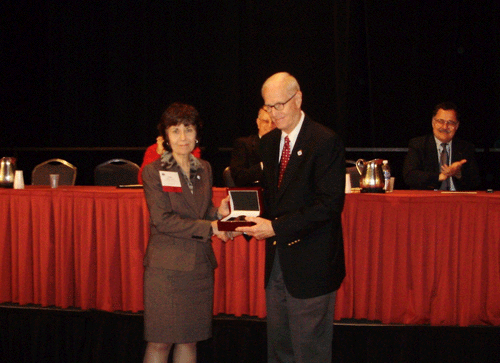
Citation: To Ed Picou, our 2010 Boyd Medalist, a man who has contributed a legacy to Gulf Coast biostratigraphy and counseled our professional organizations with wise leadership, and who continues to promote excellence in geoscience education at every level. For a man who is generous with his professional organizations and colleagues, the Boyd Medal is a truly fitting honor.
For the past 53 years, Ed Picou has been a leader in the field of economic paleontology and biostratigraphy in the Gulf Coast region, both onshore and offshore. He is recognized for his technical expertise in Cenozoic biostratigraphy, and his interpretative skills have had a significant impact on the understanding of sedimentary processes and history of the Gulf of Mexico Basin. He is a member of many professional organizations and has continuously served in many capacities for conventions, short courses, and conferences. He was a key organizer of the first Gulf Coast Section of Society of Economic Paleontologists and Mineralogists (GCSSEPM) Foundation Research Conference in 1980, which focused on the Tuscaloosa Trend, its deep water sediments, and associated turbidite reservoirs. It became a paradigm for Gulf Coast exploration. Following his retirement from Shell Oil, Ed maintains a high level of interest in all areas of geology and continues to volunteer his time and talent to the New Orleans Geological Society, the American Association of Petroleum Geologists (AAPG) and other professional organizations.
Edward Beauregard Picou, Jr. was born in Baton Rouge, where he attended Louisiana State University, graduating with a degree in Geology in 1955. Immediately afterwards he received a commission in the U.S. Army and served two years, including 18 months in Korea. Ed’s career includes the publication of a number of important papers and books. He is particularly well known for the paper, coauthored with Doris Curtis, Gulf Coast Cenozoic: A Model for the Application of Stratigraphic Concepts to Exploration of Passive Margins, which is highly cited and won several awards. Ed is the senior editor of the 1999 book, Gulf of Mexico Basin Biostratigraphic Index Fossils: A Geoscientist’s Guide. It is a “Rosetta Stone” of once-proprietary information for scientists trying to understand the Cenozoic sedimentary record in the southern U.S. and offshore Gulf of Mexico. Ed’s fine career has been recognized in many ways, including his election to Fellow of the American Association for the Advancement of Science (AAAS). He has received Honorary Membership and the Distinguished Service Award from AAPG.
Ed Picou joined Shell Oil Company in 1957, where he became a leader in the application of micropaleontology to biostratigraphy, as well as to the interpretation of depositional environments and biozones. He helped develop many techniques and procedures in biostratigraphy and was an important scientist and manager in Shell’s efforts to understand sedimentation and tectonics as exploration marched across the shelf onto the slope and eventually the abyssal Gulf of Mexico. In 1989, he was promoted to Exploration Consultant, Shell’s highest technical rank and retired in 1991. Ed is often credited with the development of an entire generation of younger paleontologists who would work with him at Shell during his career.
His distinguishing achievements are found in his many years of service to the profession of geology. He was an early member of the New Orleans Geological Society (NOGS), serving on many committees; elected President in 1992 and Director of the Board in 1996. “Mr. NOGS” is a moniker for Ed that says everything about his keen dedication to that society and to geoscience in New Orleans. He has served on the NOGS Memorial Foundation, which funds scholarships to students at three universities: Louisiana State University (LSU), University of New Orleans (UNO), and Tulane, as both Chairman and Board Member.
From his office in the Whitney Bank Building, near the French Quarter, Ed serves as a counselor to the NOGS officers and board. When the NOGS website needed an overhaul, it was Ed who took charge as Webmaster. At that time he professed to be “cybernetically-challenged.” Yet today, Ed’s website is the proud portal to NOGS, designedly minimalist in style. It says a lot about his management and style.
Ed has been very active in SEPM (Society for Sedimentary Geology). He served as President of two sections and as Vice President in 1979. The American Association of Petroleum Geologists elected Ed as their Treasurer in 2001. He is a member of the Board of Directors of AAPG/Datapages, the Association’s digital publishing subsidiary. Ed is also a member of the AAPG Foundation Trustee Associates. For many years Ed served on the Board of Trustees of the Paleontological Research Institution and is now a Trustee Emeritus of this important international organization. He is a member of the Paleontological Society and the American Petroleum Institute, and is quite active in GCSSEPM. In 2002, the GCSSEPM Foundation Board named its Graduate Fellowship Program in honor of Ed Picou. The following year he presented the Fiftieth Anniversary Commemorative paper at the GCAGS convention titled, Fifty Years of Achievements and Service to the Geologic Community by the Gulf Coast Section of SEPM.
Other organizations in which Ed is involved include the Society of Petroleum Engineers (SPE), the American Petroleum Institute (API), the Society of Independent Professional Earth Scientists (SIPES), and their respective New Orleans chapters.
Ed has had a long record of service to the Gulf Coast Association of Geological Societies (GCAGS). He was awarded Honorary Life Membership in 1995. He serves as Chairman of the Transactions on CD-ROM Committee (1998 to present) and coordinated the effort to have all existing Transactions digitized by AAPG/Datapages—over 21,000 pages of Gulf Coast geoscience. Ed was instrumental in having the GCAGS Special Publication 3-D Seismic Case Histories from the Gulf Coast Basin (1998) digitized by AAPG/Datapages for a CD-ROM (2004). The 2005 GCAGS Transactions (the “Katrina volume”) was co-dedicated to Ed and John L. “Jack” Langford. He served on the Ad Hoc Committee concerned with the relationship between GCAGS and GCSSEPM for conventions (2006-2008).
Ed Picou has unselfishly given of his time to provide leadership, mentor young scientists, and provide advice and counsel to peers. If he has a fault, it is that he cannot say no. For most of us this would lead to a dilution of effort, but for Ed it has led to contributions throughout the geological sciences, his home state of Louisiana, and to his alma mater, LSU. In 1998, he organized a group of LSU alumni that each contributed $10,000 to establish one of LSU’s first digital journal subscriptions, including archived volumes dating back sixty years. Recently, he provided funds to endow the Office of the Dean, College of Science. Ed is also involved in organizing a group of concerned LSU alumni to promote a new museum of natural history on the LSU campus. In 2007, Ed was inducted into the LSU College of Science Hall of Distinction, and in 2009 he was inducted into the LSU Alumni Association Hall of Distinction.
The AAPG Foundation Edward B. Picou, Jr. Named Grant is awarded annually to a deserving student at Louisiana State University through the AAPG Grants-in-Aid Program, and is endowed by the AAPG Foundation with substantial contributions from Ed Picou. Since its inception in 2007, three LSU geology graduate students have each received grants in the amount of $2,500 to assist in their research.
Hurricane Katrina reemphasized the engineering geology of New Orleans. The geology, subsidence, and flooding were linked. Post Katrina, there was a definite need for dialogue among geologists, engineers, and the policy makers. In 2007, he provided the leadership for the first of a series of annual symposia “The Geologic Facts of Flood Protection.”
Ed, we are privileged to have worked with you, been led by you, counseled by you, and taught by you. We thank you for being there with us. Those of you, who have yet to know this man, know this: your profession is greater because of his stewardship. Edward B. Picou, Jr. is your Don Boyd Medalist for 2010.
Thomas C. Klekamp
Steve Hill
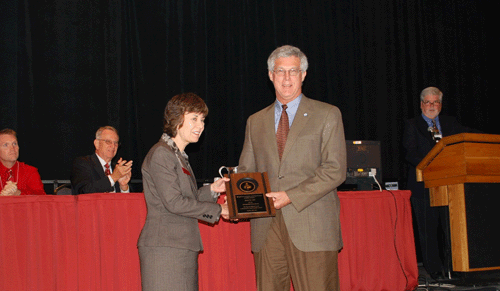
Steve Hill began his career in the petroleum industry at the young age of five when he would travel with his father Hank Hill, a geologist with Continental Oil Company, to pick up well logs and cores. He recalls helping his father carry whole cores out of his car and laying them out in the back yard to examine. He remembers the long hot drives to Ponca City to visit Continental Oil Company labs and even witnessed one of the early vibroseis experiments while living in Kansas. Little did he know that all of that would be the predecessor to a long and distinguished career in the petroleum industry.
After having received a B.S. degree in Geology from Texas A&M University in 1976, Steve began his oil and gas exploration career with The Wiser Oil Company in Houston. That same year he became a member of the American Association of Petroleum Geologists (AAPG) and the Houston Geological Society (HGS).
In the mid 90s, Steve was a consultant and worked with Michel T. Halbouty on special projects. From their friendship the idea occurred to plan a field trip to Beaumont and visit the Texas Energy Museum and the Spindletop / Glady’s City Museum. As an added twist Mike and Steve would invite 15 geology students from the University of Houston, Rice University, University of Texas, Baylor University, and of course Texas A&M. The idea was to mentor the geology students and get them excited about pursuing a career in the petroleum industry. The private field trip was a great success as the students mingled with experienced professionals and heard the old stories of Spindletop that only Mike Halbouty could tell.
So, when the call went out for a Houston Geological Society sponsored field trip to celebrate the 100 Year Anniversary of Spindletop, Steve stepped up again and organized the event. The field trip was a great success as Mike Halbouty led over 300 HGS members to the historic birthplace of the petroleum industry. The attendees saw a video of Spindletop’s history, had lectures from several local and historical personages, and visited the East Texas Energy Museum, Glady’s City, and the Spindletop Overlook. The fieldtrip was a financial success for HGS, making more than $3,000 for HGS. Steve Hill received the HGS Presidents Award for organizing and coordinating this event. Steve’s citation acknowledged his ability to execute logistics flawlessly and create an experience that would be talked about for some time.
He also served as the AAPG Division of Professional Affairs “Correlator” Editor and in 1996 as the Gulf Coast Association of Geological Societies (GCAGS) Houston Convention Schedule Chairman, being responsible for organizing speaker times, assigning rooms, and preparing signage for all events.
As Finance Committee Chairman and a long-serving member on the GCAGS Board, Steve has been responsible for the fiscal well-being of the Section, attending nearly every Board meeting and assuring the smooth financial operation of the non–GCAGS Convention activities. He has overseen the conversion of the old manual entry procedures to the digital world of QuickBooks; and argued for the maintaining of reasonable GCAGS Convention costs, keeping them comparable with other regional conventions while maintaining GCAGS Convention profitability in order to generate funds sufficient to meet GCAGS operating needs. Steve is an important resource for current Boards because of the historical perspective and information that he can bring to their business discussions.
In 2008, the GCAGS Board recognized the importance of the Finance Committee Chairman. They voted unanimously to give the Finance Committee Chairman voting privileges. The discussion included the importance of having not only a financial perspective and voice of reason, but assuring that the current Board would have the historical perspective of Steve’s long years of service to GCAGS. Candidates for the Distinguished Service Award should have singularly or over a long time provided “…significant and valued service to GCAGS. The term singular does not necessarily mean without precedent, but rather that the activity should be specific and outstanding....”
Steve Hill serves as a distinguished example of outstanding service and value that members can bring to their local society and Section. The continued success of GCAGS as an organization depends upon the willingness of people like Steve Hill to guarantee its future.
Steve is a partner with his long time friend Stan Decker and serves as the Exploration Manager for Decker Operating Company. He married Candy in 1973 and has two children, Kyle and Allison. He is a member of the Society of Independent Professional Earth Scientists (SIPES), Society of Exploration Geophysicists (SEG), Society of Petroleum Engineers (SPE), The Houston Yacht Club, and serves on the Board of Directors of the Petroleum Club of Houston.
Howard Kiatta
DISTINGUISHED SERVICE AWARD
Richard H. Sams
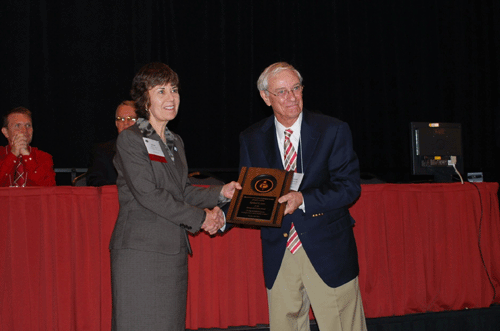
Richard H. Sams is being honored this year with the Distinguished Service Award for his dedicated and devoted service to the geological profession and to the Gulf Coast Association of Geological Societies (GCAGS). He is very deserving of this recognition not only for the various positions that he has held in the GCAGS and the technical papers that he has contributed but also for his service and contributions to all the geological organizations that he has been associated with over his long career as a geologist.
Dick was born in Atlanta, Georgia, in 1935. He attended Emory University, where he received a B.A. in Geology in 1957, and then after three years of active duty in the Navy, he went to UCLA where he received an M.A. in Geology in 1964. After many years of working as a geologist in the oil industry, Dick decided to return to school at the ripe old age of 51 in 1986 and received his Ph.D. in Geology from the University of Texas at Austin in 1991. Under the tutelage of Bill Galloway and Bill Fisher in sequence stratigraphy, Dick wrote his Ph.D. dissertation on the stratigraphy of marine transgressive boundaries using the Carrizo-Reklaw as an example, a stratigraphic interval in which he had considerable working experience.
Dick began his working career as an exploration geologist for Humble in 1964 in Corpus Christi, and in 1968 ventured out on his own as an independent geologist in Corpus where he also dabbled in catfish farming. In 1972, Dick joined Tesoro Petroleum as a district geologist in San Antonio and again went independent in 1974, when he founded Sams Exploration to explore for oil and gas as an independent operator. During the period from 1986 to 1991, while he was working on his Ph.D, he worked part time for the Bureau of Economic Geology. In 1991, Dick went to work for Lagoven, SA (subsidiary of PDVSA) in Caracas, Venezuela, teaching sequence stratigraphy to company personnel. After experiencing attempted revolution and robbery in Caracas, Dick returned to the U.S. in 1996 and resumed his activities as an independent and president of Sams Exploration, but maintains an international consulting business specializing in exploration sequence stratigraphy. He presently resides in Atlanta, Georgia, where he teaches part time at Emory University, but keeps a house at Canyon Lake, Texas, north of San Antonio, where he frequently visits.
Dick’s dedication to the geological profession began when he joined the Corpus Christi Geological Society (CCGS) and became Editor of their Bulletin and then Program Chairman. When he moved to San Antonio, he served the South Texas Geological Society (STGS) as our Editor, Program Chairman, and from 1976 to 1977 as President. Dick began his service to GCAGS in 1979 as Chairman of the “Symposium on Alternate Energy Resources” at the 29th Annual Meeting. In 1986, he was Vice President of the GCAGS 36th Annual Meeting and in 1987 was President of the 37th GCAGS Annual Meeting in San Antonio. He also served the American Association of Petroleum Geologists (AAPG) as General Vice-Chairman of their 34th National Convention in San Antonio in 1984 and was Chairman of the San Antonio Chapter of theSociety of Independent Professional Earth Scientists (SIPES) from 1983 to 1984.
Altogether Dick has 35 technical papers published on the geology of the numerous areas that he has worked throughout his career; he has been co-author of two books on the geology of Venezuela and Trinidad and was involved in the oral presentations and poster sessions of 15 papers. Two of his technical papers were published in GCAGS publications, one in the AAPG Bulletin, 16 in STGS publications, and five were republished in the Oil and Gas Journal. Needless to say, his contribution to the geology of the areas covered by these papers, particularly in the Gulf Coast, has been significant. In addition, Dick was the author of a book on the plot to capture Sherman during the Civil War.
Dick lost his first wife Betty to breast cancer who was the mother of his three children, Sarah, David, and Houston. He is presently married to the former Jane Boyd and they have a total of five grandchildren. Dick was in the U.S. Naval Reserve from 1953 to 1976 and is now retired with the rank of Commander.
Dick is a person of high moral and ethical standards from both a personal and professional standpoint. He is a member of the American Scientific Affiliation, an organization of scientists who are Christians and are dedicated to try to resolve the conflicts between science and religion. He is held in high regard by his peers and is well known for his scholarly approach to the science of geology. He was my mentor on sequence stratigraphy and patiently helped me to understand the concepts of this major advancement in our science. For his outstanding service and dedication to our profession and to GCAGS, Dick is truly deserving of the Distinguished Service Award.
Richard N. Hargis
Tom Ewing
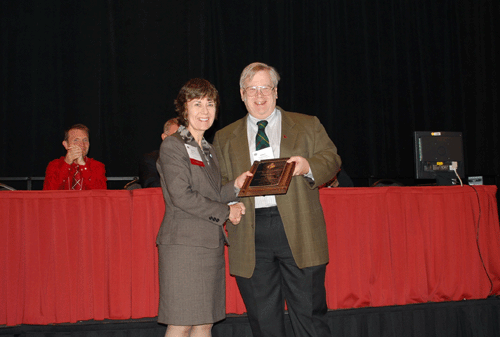
During our professional and personal lives, we encounter only a few individuals who are highly gifted in a multitude of aspects. Tom Ewing is one of those rare individuals. Not only is Tom a true scientist, but he has also demonstrated his ability to apply his knowledge successfully in the oil and gas industry, as well as in other fields. To our great benefit, he is also very adept at conveying his ideas, having authored approximately 120 papers and abstracts and given at least as many oral presentations at conventions, seminars, and short courses.
Field trips are some of Tom’s favorite activities, and his expertise in leading them is frequently called upon. Very few sites of geological interest in the San Antonio and surrounding South Texas area have escaped the tread of Tom Ewing’s boots. In particular, the links between San Antonio’s urban geology and the city’s history have long fascinated him. In his popular South Texas Geological Society (STGS) guidebook, “Landscapes, Water, and Man: Geology and History in the San Antonio Area of Texas,” Tom has woven science and history into one story that reaches out to the general public.
Tom, however, is perhaps most widely recognized as a master of regional studies, and many have praised his ability to assemble geological pieces into the “big picture.” Of particular fame are his papers on the Yegua Trend of the Texas Gulf Coast and Late Jurassic depositional systems of the northern Gulf of Mexico Basin, and his compilation of the “Tectonic Map of Texas” for the Bureau of Economic Geology. Numerous professionals have credited Tom’s published works for aiding in their own research, applications, and publications. In recognition of the quality and significance of his work, Tom has twice received the American Association of Petroleum Geologists (AAPG) A. I. Levorsen Memorial Award for papers given at Gulf Coast Association of Geological Society (GCAGS) annual meetings, as well as several other best paper awards.
In addition to his valuable technical contributions, Tom has given tremendous service to GCAGS, AAPG, and its Divisions and Affiliated Societies by way of his leadership and organizational skills. He has served the GCAGS as Editor of the Transactions in 1985, Field Trip Chairman for the 1987 Annual Convention, General Chairman for the 1996 Convention, Technical Program Co-Chairman for the 2004 Convention, and is currently serving the 2010 Convention as Vice Chairman for GCSSEPM. Tom has also served two of the GCAGS Affiliated Societies in several capacities. He served the Austin Geological Society as Secretary (1981-82), Publications Chairman (1982-83), and Technical Programs Chairman (1983-84). STGS has benefited from Tom’s talents in many ways, including his service as Vice-President (1988-89), President-Elect (1989-90), President (1990-91), Director (1996-97), and member of various committees.
Tom has made valuable contributions to AAPG as a member of the Geophysics Committee (1993-99), the Convention Committee (1996-99), and as Field Trip Chairman for the 1989 Annual Convention. He has served several terms as a member of the House of Delegates and as HoD Vice-Chairman in 1992-93. He is a member of all three of AAPG’s Divisions, and has held positions with the Energy Minerals Division as President-Elect (1998-99), President (1999-2000), Vice-Chairman for EMD Activities at the 1999 Annual Convention, and Chairman of the Publications Committee (2000-02). As a leader within the Division of Professional Affairs (DPA), Tom has served as Treasurer (1994-96), Vice-President (1997-98), member of the Government Affairs Committee (2000-03), and President (2007-08).
Tom was born in Elgin, Illinois, to Galen Wood Ewing, a chemistry professor, and Alice Sipple Ewing. He lived with his parents and two older brothers, Martin and William, in Schenectady, New York, then attended grade school in Las Vegas, New Mexico, and finally moved to Orange, New Jersey, where he graduated from Newark Academy. For his college education, Tom earned a B.A. degree in Geology from the Colorado College in 1975, an M.S. degree in Geochemistry from the New Mexico Institute of Mining and Technology in 1977, and a Ph.D. in Geological Sciences from the University of British Columbia in 1981.
As he was completing his doctorate, Tom joined the Bureau of Economic Geology (BEG) at the University of Texas at Austin. While at the BEG, Tom began his many contributions to the geology of Texas. Then in 1985, he formed, together with his geophysicist wife Linda, Frontera Exploration Consultants, Inc. in San Antonio, Texas. From 1985 to 2003, Tom consulted primarily to Venus Oil Company and then was employed as Senior Explorationist for Venus Exploration, Inc. He has continued to operate Frontera, despite the sad passing of his beloved wife and dedicated business partner in 2008. Since 2007, Tom has also been a partner in Yegua Energy Associates, LLC, in San Antonio, conducting oil and gas exploration in the Gulf Coast and West Texas.
To realize Tom’s unlimited ability to give of himself, it is important to know his civic and cultural contributions. Tom exerts tremendous energy directing two choirs, the San Antonio Liederkranz, a 60-voice German men’s chorus, and Kelly’s Irish Singers of San Antonio. He also possesses a tenor voice of operatic quality that constantly amazes friends, as he sings not only with his choirs but in a variety of other venues as well. Tom supports a number of charities and has been an active member and served as Director of the Kiwanis Club of San Antonio. However, of greatest importance to Tom, and a testament to his true spiritual nature, he is devoted to his faith and reverently serves his church, St. Joseph Catholic Church in San Antonio, through his singing and as Co-Chairman of the Parish Pastoral Council.
To sum up Tom, he is a mosaic of creative talent and enthusiasm encompassing geology, music, writing, teaching, professional service, and religion. He gives his all to his endeavors, not out of obligation, but out of a pure love of all of these things.
In recognition of his dedicated service, leadership, and contributions to the geological profession, Tom has previously been honored by GCAGS, AAPG, and other organizations under its umbrella. He received the GCAGS Distinguished Service Award in 1993, the Energy Minerals Division (EMD) Distinguished Service Award in 2004, the AAPG Distinguished Service Award in 2005, STGS Honorary Membership in 2008, and EMD Honorary Membership in 2009. Now, it is time for us to recognize Tom Ewing for his outstanding overall contributions to the Gulf Coast Association of Geological Societies by bestowing upon him GCAGS Honorary Membership.
With greatest respect,
Martha Guethle, Bob Scott, and Bonnie Weise
Janok Bhattacharya
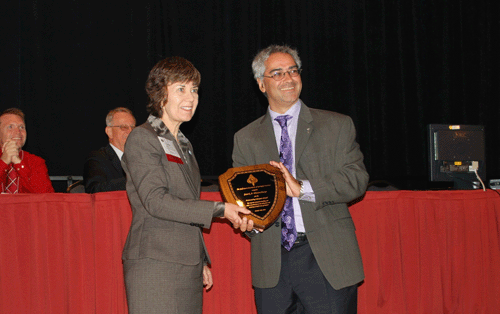
Janok received his B.Sc. (with Honors) in 1981 from Memorial University of Newfoundland, Canada. Following his Bachelor’s degree, he worked for several years at ESSO Resources Calgary, before returning to academia to complete his Ph.D. in 1989 from McMaster University, Hamilton, Ontario, Canada. Following a Natural Sciences and Engineering Research Council post-doc at the Alberta Geological Survey in Edmonton, Janok joined ARCO Research in Plano, Texas, where he worked as a Research Geologist from 1991 to 1995. He then moved to the Bureau of Economic Geology at Austin, Texas as a Research Associate, before returning to ARCO as a Senior Research Geologist from 1997 to 1998.
Janok enjoyed his work in industry; however, his passion was to teach. That opportunity came in 1998, when he joined the University of Texas at Dallas (UTD), where he was tenured in 2001 and promoted to full Professor in 2004. Janok left UTD to join the Department of Geosciences (now Earth and Atmospheric Sciences) at the University of Houston (UH) as the Robert E. Sheriff Professor of Sequence Stratigraphy in the fall of 2005. He continues to maintain close ties to industry, however, as evidenced by his consortium of oil companies that fund his Quantitative Sedimentology Laboratories.
Janok is well known to the professional community (especially the American Association of Petroleum Societies (AAPG) and the Society for Sedimentary Geology (SEPM) for his ongoing efforts, Gulf Coast Section of SEPM (GCSSEPM) President, 2008, SEPM Convention Vice Chair in 2008, Technical Program Chair for the Annual AAPG meeting in 2004, and SEPM Field Trip Chair in 1999. He is also Co-Chair of the AAPG Education Committee. He has been awarded the AAPG Certificate of Merit in 2004, the Dallas Geological Society Professional Service Award in 2004, and the SEPM Appreciation Award in 1999. In addition, he is an Associate Editor of the AAPG Bulletin (2005-present) and the Journal of Sedimentary Research (2002-present).
Janok’s research interests include deltaic sedimentology and sequence stratigraphy, the local control of structure on stratigraphy and reservoir architecture of clastic depositional systems. His abilities to communicate the results of his research are evidenced by both his outstanding publication record (over 50 technical papers) and over 100 abstracts and oral presentations. These resulted in his receiving the Canadian Society of Petroleum Geologists (CSPG) Best Oral Presentation Award (2004), the Frank Kottlowski Memorial Presentation Award (2002), the Houston Geological Society (HGS) Best Oral Paper Award (2002), and the AAPG “Al” Cox Award for best poster at an AAPG SW section meeting (2001).
One of Janok’s greatest abilities is being able to merge those research interests with his teaching skills. He is an exceptional communicator! His undergraduate courses in “Stratigraphy” and “Petroleum Geology,” and graduate classes in “Sequence Stratigraphy” and “Rivers and Deltas” are always in high demand. He recently added a team-taught course that prepares students to compete in the Imperial Barrel Competition. Not surprisingly, he is also the faculty advisor to the department’s AAPG student chapter. He has also taught field camp (both at UTD and UH), where his skills in the field are fully exposed. Janok has a particular passion for the field. Field trips are an integral part of his courses, and few of his graduate students finish without a healthy dose of fieldwork, often including measuring sections while dangling from a rope over high cliffs. His ability to train, inspire, and mentor young researchers has made him the most highly sought after graduate advisor of any of our geology faculty. He is a mainstay in our “Accelerated Masters” Program at UH, and is in high demand to teach short courses for both industry and professional organizations throughout the world.
Janok was selected as an AAPG Distinguished Lecturer in 2005-2006. He received the AAPG Southwest Section Distinguished Educator Award in 2005 and the AAPG Grover Murray Distinguished Educator Award in 2007. It therefore comes as no surprise that he is the recipient of the 2010 GCAGS Outstanding Educator Award. I know of no person better qualified to receive this award!
William R. Dupré
OUTSTANDING EDUCATOR AWARD
Perry O. Roehl
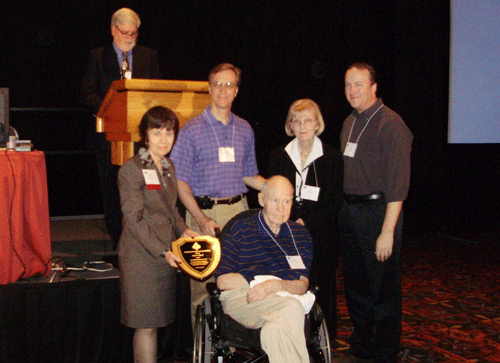
Perry O. Roehl and Family
Whether it was me meeting Perry for the first time and getting an answer about lunar orbit or him seeking me out over the years at the log library to bring up answers to questions that I didn’t have, whether I liked it or not, I was going to get a learning experience when Perry was around. Members of the South Texas Geological Society (STGS) noticed this too and nominated Dr. Perry O. Roehl for the Gulf Coast Association of Geological Societies (GCAGS) Outstanding Educator Award. Based upon his dedication to educating students to be future geologists and especially for his training of professional geologists to improve their skills, GCAGS agrees that Perry deserves this prestigious award.
Perry grew up in Indiana where he worked at his family’s trucking business during the last years of the Depression. During that time he dealt with desperados hijacking trucks in America’s heartland. He was in World War II. After VJ Day, he pushed new Army 4x6 trucks overboard into the Pacific Ocean to make room on troop transport ships. He earned a B.Sc. in Geology from Ohio State University in 1950, an M.S. in Geology from Stanford University in 1952, and a Ph.D. in Geology from the University of Wisconsin in 1955. No stories needed here.
After earning his Ph.D., Perry was an exploitation engineer and production geologist from 1956 to 1966 at Shell Oil Company. He was a research associate at Union Oil from 1966 until 1974. From 1974 until 1981 Perry was a consultant on petroleum and mineral projects around the world and especially in the Western United States.
After establishing his ability through experience up to 1981, Perry spent much of the middle of his career giving the benefit of his knowledge to students and professional geologists, sacrificing so others can excel, living the joy of discovery vicariously through the exploits of the people he trained. In 1981 Perry began his undergraduate geology teaching years as the first Herndon Distinguished Professor of Geology at the Department of Geosciences at Trinity University, San Antonio, Texas. At Trinity, four professors taught very small classes that sometimes graduated as few as three geology majors a year; a close-knit environment where each faculty member could be a true mentor to the students. Perry’s friendly, honest, and rebellious nature served his role as mentor well. He questioned plate tectonic theory, forcing students to defend their new found beliefs. Unlike the other professors at Trinity between 1981 and 1994, Perry’s petroleum and field work background undoubtedly influenced some of the 128 geology students whom he taught or mentored to follow a career in the oil industry, and most essentially, to study the rocks directly. Former American Association of Petroleum Geologists (AAPG) President Scott Tinker is one of those students.
In the midst of undergraduate teaching, Perry spent a year during 1986 and 1987 on sabbatical leave when he presented 60 lectures to professional geologists in Australia and New Zealand. These lectures, when combined with other lectures, short courses, and field trips suggests that he has educated over 1,500 petroleum industry professionals during his 54 years as a geologist. Perry has a list of 71 publications. Transfer of knowledge is his overriding quest in life.
His participation in professional societies affirms Perry’s zeal to share knowledge. In 1969 he received the GCAGS Best Paper Award for “Permeability Anisotropy in Microsucrosic Dolomites” and has performed various duties for GCAGS since then. He has presented many talks at Society of Independent Professional Earth Scientists (SIPES) meetings and served several offices including National President. He has presented several talks and served as chairman or co-chair of various committees at several AAPG conventions, for STGS, for Society of Economic Paleontologists and Mineralogists (SEPM), Geological Society of America (GSA), and Society of Petroleum Engineers (SPE). He has been a Registered Professional Geologist in Texas and California, and is an AAPG and Division of Professional Affairs (DPA), South Texas Geological Society, and SIPES member.
After retiring from Trinity in 1994 and until 2005, Perry was co-owner and then executive consultant of a company that analyzed geologic data, Target Forecasting, Inc., later Target Strike, Inc. He was a consultant from 2005 until 2009. Unfortunately since the summer of 2009, Perry has retired due to the effects of a major stroke that has quieted a booming voice, but not a bold mind. Now his main regret is not having finished the last paper he was writing. Now his favorite entertainment is “Planet Earth.” After 56 years of marriage, Mary now gets more words in, sometimes. Perry can’t come to the log library anymore. I find myself missing that. I find myself going to visit Perry at his nursing home. He gives learning experiences.
John Long
GROVER E. MURRAY BEST PUBLISHED PAPER AWARDS
FIRST PLACE – 2009
“Basement Controls on Subsurface Geologic Patterns and Coastal Geomorphology across the Northern Gulf of Mexico: Implications for Subsurface Studies and Coastal Restoration”
Bryan P. Stephens
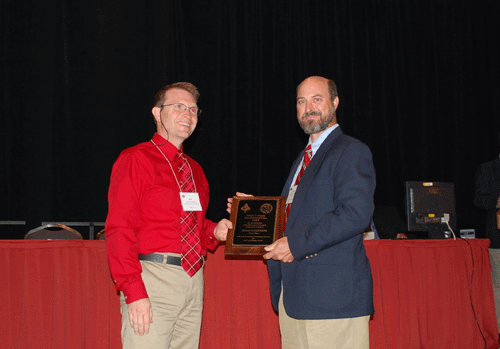
Bryan earned his B.S. in Geology from the University of New Orleans in 1985, and an M.S. in Geology from the University of Kansas in 1988. Bryan worked for three years in the Petroleum Research Section of the Kansas Geological Survey. From 1988 to 1999, he worked for Texaco in New Orleans on a variety of exploration and production assignments across the Gulf Coast and offshore Gulf of Mexico. He joined the Minerals Management Service in 1999, where his primary responsibilities include lease sale evaluations in the deepwater Gulf of Mexico. Bryan’s geologic interests are centered around the interactions of basement tectonics, salt tectonics, and depositional systems.
SECOND PLACE – 2009
“Origin of Igneous Rock Fragments from South Louisiana Salt Domes”
Minghua Ren, Robert Stern, Brian E. Lock, Randy Griffin, Elizabeth Y. Anthony, and Ian Norton
Minghua Ren
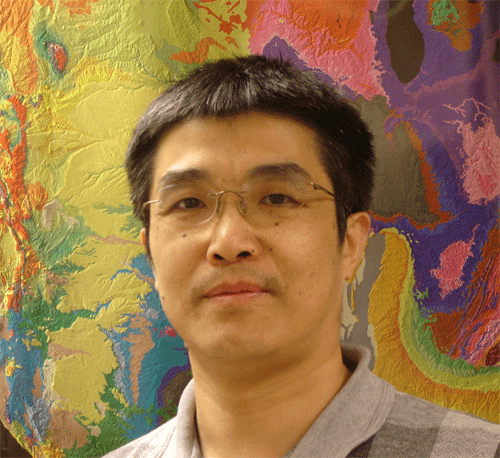
Minghua Ren is a Research Scientist Associate at the Department of Geological Sciences, University of Texas at El Paso. He received his B.S. in Economic Geology from Nanjing University, China, and Ph.D. in Geochemistry from Baylor University, Waco, Texas. His current research has involved the mineralogical, petrologic, and geochemical study of xenoliths in continental rift zone. The field locations of his research include Five Islands salt domes, southern Louisiana; Big Bend National Park, Texas; SW range of Altay Mountain, Xinjiang, China; and Eburru volcanic complex, Kenya. Cameca SX50 electron microprobe has been used to study the mineral characteristics, petrogenesis, and mineral compositions in the research. His previous research included the partitioning of trace elements between feldspar and silicic magma; the character of REE minerals (monazite, allanite, and chevkinite) in felsic magma systems; and a mantle xenolith study in the western United States.
Robert Stern
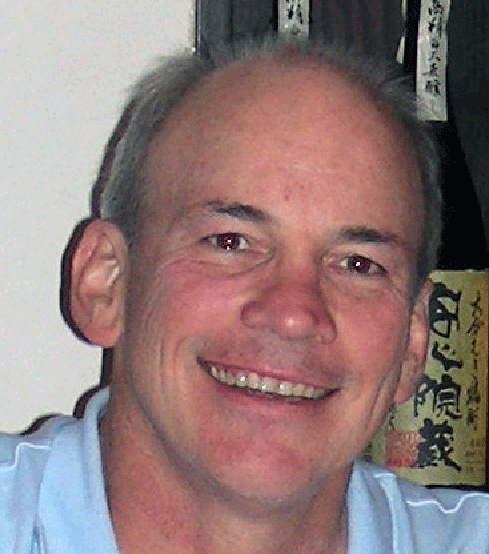
R. J. (Bob) Stern is Professor of Geosciences at the University of Texas at Dallas, where he has been a faculty member since 1982. He specializes in tectonics and igneous geochemistry and radiogenic isotopes, focusing on field studies on Neoproterozoic rocks in NE Africa and Arabia and Cenozoic igneous rocks in the Mariana arc in the Western Pacific Ocean. He received his Geology B.S. from UC Davis and Ph.D. from the Scripps Institution of Oceanography, UCSD. He has recently begun to study igneous rocks and tectonics of the Gulf coastal region.
Brian E. Lock
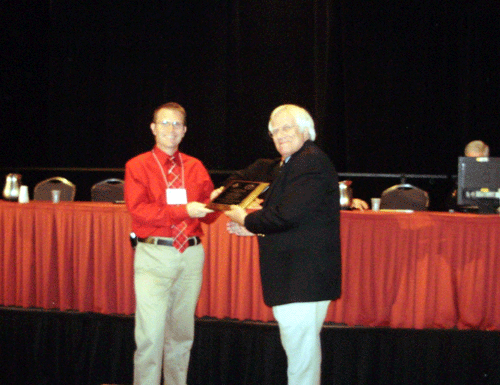
Brian Lock grew up in England and was educated at Cambridge University, with a Ph.D. in 1969. He taught in South Africa (Rhodes University) from 1970 through 1977, at which point he joined the faculty at the University of Southwestern Louisiana (now the University of Louisiana at Lafayette), where he served as department head from 1991 through 2004. His industry experience includes seven months as a consultant team member working for NorskeFina evaluating the petroleum potential of the Svalbard Islands area, north of Norway, and a year (1985-1986 with Geoconsultants International in Kenner, Louisiana). His research interests include evaporite and carbonate sedimentation, with emphasis on petroleum applications. As a consultant, he has taught short courses on basic petroleum geology and carbonate sedimentology in the U.S. and in Mexico, Nigeria, Myanmar, Indonesia, and India, and has worked as mine geologist for South Louisiana salt mines. His current research focus is on sedimentology and stratigraphy of the Eagle Ford Formation in West Texas, where he has led several field trips for petroleum companies with interests in the current play. He has been active on the Board of the Gulf Coast Association of Geological Societies for twenty years or so and served as President in 1998-1999.
Randy Griffin
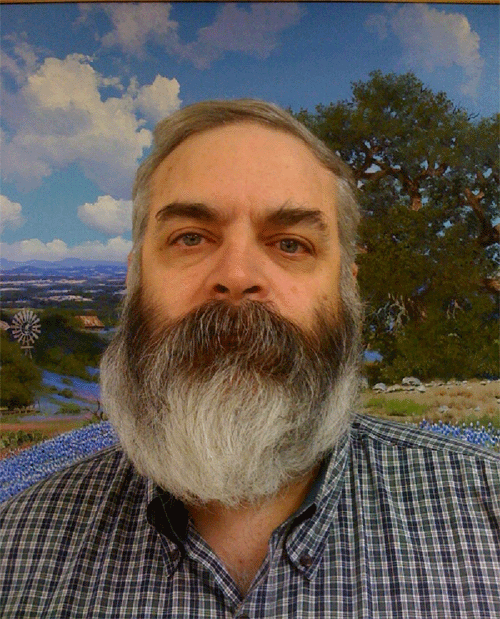
Randy Griffin is an igneous petrologist and Senior Lecturer at the University of Texas at Dallas in Richardson, Texas. His current research interests focus on the geochemical and geochronological aspects of intraplate volcanism along the margin of North America and the Gulf of Mexico during the Mesozoic. He earned a Ph.D. in Geoscience at the University of Texas in 2008.
Elizabeth Y. Anthony
No biography or photograph available as of press time.
Ian Norton
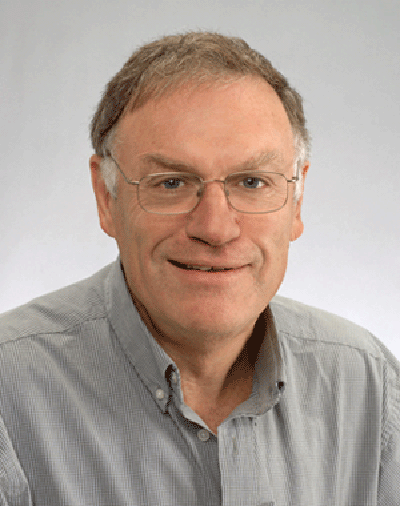
Ian Norton’s research is focused on understanding the structural evolution of continental margins, particularly trying to reconcile deformation amounts that can be predicted from regional-scale plate reconstructions with deformation that can be inferred from local-scale structural data. This involves understanding of large-magnitude extension, so includes field programs in the Basin and Range, particularly Death Valley, and seismic programs in the Gulf of Mexico.
THIRD PLACE – 2009
“Geological Processes and Sedimentation Rates of Wind-Tidal Flats, Laguna Madre, Texas”
Robert A. Morton and Charles W. Holmes
Robert A. Morton
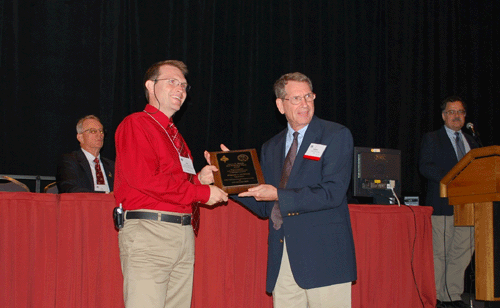
Bob Morton is a research geologist with the U.S. Geological Survey (USGS). Before joining the USGS in 1998, he was a Senior Research Scientist and former Associate Director of the Bureau of Economic Geology at the University of Texas at Austin. His technical expertise includes modern depositional environments and marine processes with an emphasis on coastal evolution, shoreline dynamics, and land loss. For the past 35 years, Bob has worked nationally and internationally with federal and provincial agencies regarding natural hazards and the management of coastal resources, and has served on editorial boards of the Journal of Sedimentary Research and the Journal of Coastal Research. Currently his research involves comparing the geological impacts and coastal hazards associated with subsidence, tsunamis, and storms.
Charles W. Holmes

In 1959, Charles W Holmes received a Bachelor’s degree in Science from St. Joseph’s College, Rensselear, Indiana. In 1963, he obtained a Ph.D. in Geology from Florida State University.
In 1966, Charles Holmes was appointed to a position of Assistant Professor of Geology at Colgate University, Hamilton, New York. In 1968, he began an 18 year career of study in the Gulf of Mexico with the U.S. Geological Survey (USGS) as a geochemist with the assignment to build a geochemical facility capable of supporting studies in the Gulf of Mexico and Caribbean Sea. A product of this facility was the establishment of the sedimentary budget of the South Texas Shelf.
In 1990, at the request of the Texas Bureau of Economic Geology, he aided in a study of the development of the flood plains of Texas rivers. Based on this effort, he was requested to join the paleoecological studies of the Florida Restoration Program. In 1995, he transferred to the USGS in St. Petersburg, Florida, where he expanded the chronological laboratory, which in addition to supporting the Florida Restoration Program, assisted in studies nationwide.
After forty years with the USGS, he retired in October 2007. However, he established a consulting company, Environchron LLC, where is continues his research into chronicling environmental change.
The results of studies derived from the data provided by these laboratories have been published in peer reviewed articles. Charles Holmes is the author or co-author of over one hundred and fifty of these articles.
2009 A. I. LEVORSEN MEMORIAL AWARD
“Integrated Analysis of the Upper Jurassic Bossier Deltaic Complex, East Texas: A Revisit of Deposition Seaward of the Delta-Front”
John B. Wagner*
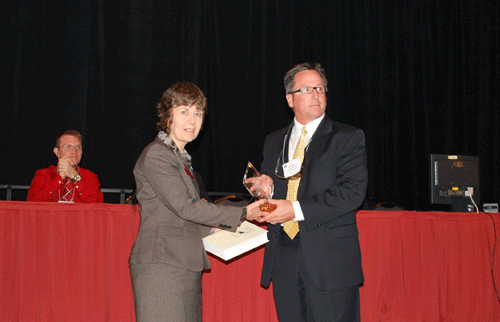
John received both his B.S. and M.S. degrees in Geology from Louisiana State University in Baton Rouge and his Ph.D. in Geology at the University of Texas at Dallas. He joined Nexen Petroleum in December of 2000 as Sedimentologist for Deep-Water Exploration and Development and is currently Chief Geologist for Nexen Petroleum U.S.A. Prior to joining the petroleum industry with Mobil Research & Development in 1987, his work ranged from field geologist in Alaska, to manager of a seismic crew, to coastal geologist for the Louisiana Geological Survey Coastal Geology Program. John was a scientist on board the 1985 U.S. Geological Survey (USGS) / Institute of Oceanographic Sciences (IOS) GLORIA survey of the deep-water Mississippi Fan, Gulf of Mexico, which was a significant expedition in regards to our understanding of deep-water submarine fan systems. He is a member of both the AAPG and the Society for Sedimentary Geology (SEPM) and has served on Program Committees for the Gulf Coast Section of SEPM (GCSSEPM) Foundation Annual Research Conferences and was the 2009 President of GCSSEPM. In addition to his role as Chief Geologist for Nexen Petroleum U.S.A., John is currently a Research Associate Professor at Southern Methodist University in Dallas, Texas, where he serves as graduate advisor and teaches graduate courses in the field of sedimentology and has published over 30 papers and abstracts. His work travels have taken him from the rivers and streams of Sakhalin Island, Russia, to the coast of Vietnam, to the jungles and mountains of Bolivia and Argentina. His primary research interests are focused on siliciclastic depositional systems, both modern and ancient, sandstone sedimentology, reservoir architecture, depositional systems analysis, and understanding the various allocyclic and autocyclic controls that influence deposition
*The abstract published in the 2009 GCAGS Transactions, v. 59, was co-authored by K. M. Stevens.
2009 THOMAS A. PHILPOTT EXCELLENCE OF PRESENTATION AWARDS
FIRST PLACE – 2009
“Strategies for Optimized Oil Recovery in Fluvial-Dominated Deltaic Reservoirs in the Lower Woodbine Group, East Texas Field”
William A. Ambrose, Tucker F. Hentz, Florence Bonnaffé, Robert G. Loucks, and Fred P. Wang
William A. Ambrose
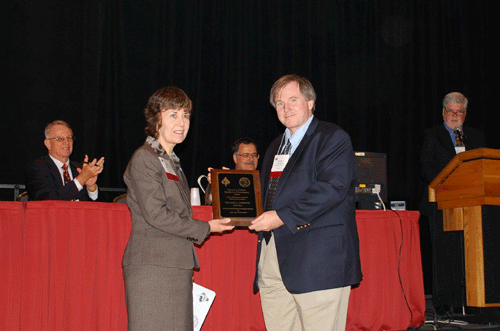
William A. Ambrose is a geologist specializing in sedimentology and reservoir characterization. He received a Master of Arts degree in Geological Sciences in 1983 from the University of Texas at Austin. Before joining the Bureau of Economic Geology in 1987, he was involved in regional subsurface studies of the Yegua and Vicksburg formations and the Wilcox Group in the Texas Gulf Coast. Ambrose has worked on a variety of projects at the Bureau, including characterization of Frio fluvial and deltaic reservoirs in South Texas, co-production of gas and hot brine from Oligocene reservoirs in the Texas Gulf Coast, evaluation of coalbed methane reservoirs in Rocky Mountain basins, and reservoir characterization and basin analysis studies in Venezuela and Mexico. He is currently a Co-Principal Investigator of the Bureau’s STARR (State of Texas Advanced Oil and Gas Resource Recovery) program, Chair of the EMD Coal Committee, and Co-Chair of the American Association of Petroleum Geologists (AAPG) Astrogeology Committee.
Tucker F. Hentz
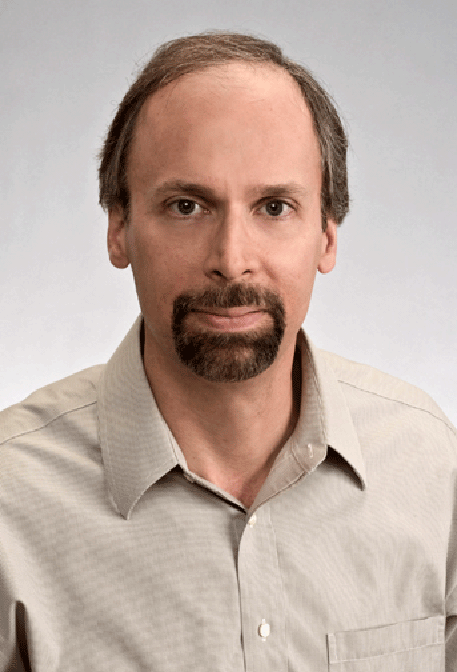
Tucker F. Hentz is a geologist with the Bureau of Economic Geology specializing in sequence stratigraphy and basin analysis. He received his M.S. degree in Geology in 1982 from the University of Kansas. Prior to joining the Bureau, he worked for Exxon Co., USA, in its New Orleans office. Hentz has been involved in a variety of research projects during his 27 years at the Bureau, including depositional and sequence-stratigraphic analysis of Cleveland tight-gas sandstones in the Anadarko Basin, basin analysis using a 3D-seismic and well-log dataset from the offshore Louisiana Miocene succession, evaluation of hydrocarbon plays in the Burgos Basin of offshore northeast Mexico, characterization of reservoir facies of lower Atoka siliciclastics of the Fort Worth Basin, and sequence-stratigraphic and depositional analysis of Woodbine Group sandstones in the East Texas Basin.
Florence Bonnaffé
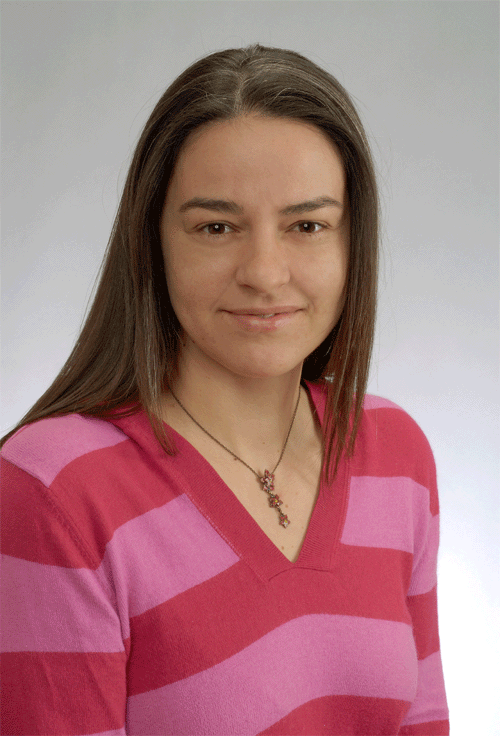
Florence Bonnaffé is a Research Scientist Associate at the Bureau of Economic Geology, John A. and Katherine G. Jackson School of Geosciences, at the University of Texas at Austin. Her previous work was with Elf Exploration Production and Compagnie Generale de Geophysique. She received her M.S. degree in Applied Geophysics from the University of Paris in 1996.
Robert G. Loucks
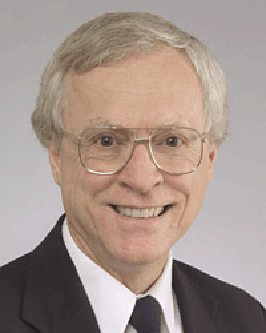
Robert Loucks is a Senior Research Scientist at the Bureau of Economic Geology. He received his B.A. degree from the State University of New York at Binghamton in 1967, and his Ph.D. from the University of Texas at Austin in 1976. His general research interests include carbonate and siliciclastic sequence stratigraphy, depositional systems, diagenesis, and reservoir characterization. His present research includes deep buried reservoirs in the Gulf of Mexico, evaporite and carbonate paleokarst, and pore networks in carbonates, sandstones, and mudrocks.
Fred P. Wang
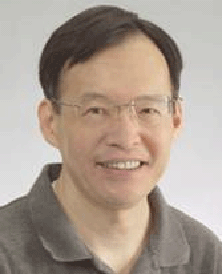
Fred Wang is a Research Scientist at the Bureau of Economic Geology at the University of Texas at Austin. He holds Ph.D. and M.S. degrees in petroleum engineering from Stanford University, California, and the University of Texas at Austin. Before rejoining the Bureau in 1999, he worked at PetroGeo Service, Inc. in Houston. He has experiences in reservoir characterization, shale gas plays, deep-shelf /deep-water fields, CO2 sequestration, and enhanced oil recovery.
SECOND PLACE – 2009
“Gas Washing Pattern and Economics in an Area of Continental Shelf, Offshore Louisiana”
Steven Losh, Daniel Swart, and Andrew Dickinson
Steven Losh
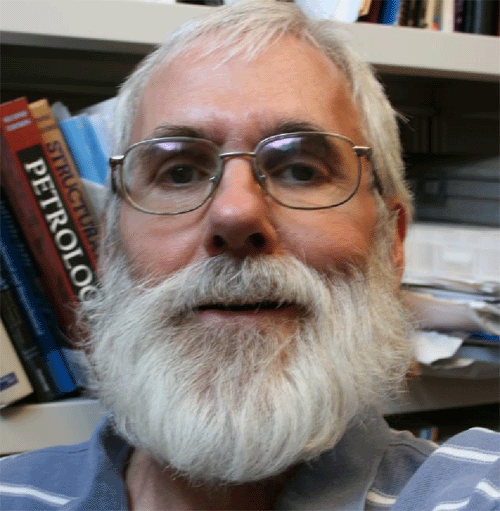
Steven Losh enjoys studying the compositions and movements of subsurface fluids of all sorts. His work includes studies of oil-gas interactions in sedimentary basins and fluid flow in faults associated with oilfields, gold deposits, and metamorphic core complexes. He received his B.S. in Geological Engineering from the Colorado School of Mines and his Ph.D. from Yale University. After a stint as a Research Associate at Cornell University, he is now an Associate Professor of Geology at Minnesota State University.
Daniel Swart
No biography or photograph available as of press time.
Andrew Dickinson
No photograph available as of press time.
Andrew Dickinson studied Gas Washing Analysis as an upperclassman at Minnesota State University, Mankato as part of an undergraduate research project. He will be attending medical school at the University of Minnesota, Duluth beginning in the fall of 2010.
THIRD PLACE – 2009
“A Quantitative Paleogeomorphic Study of the Fluvio-Deltaic Reservoirs in the Atoka Interval, Fort Worth Basin, Texas, U.S.A.”
Vishal T. Maharaj, and Lesli J. Wood
Vishal T. Maharaj
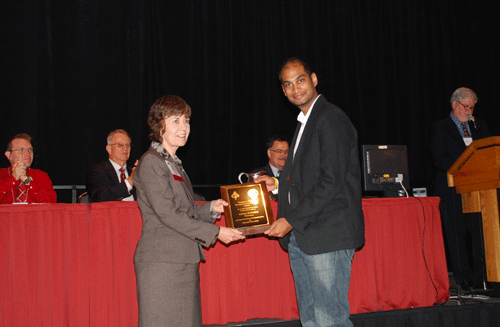
Vishal Maharaj is a native of Trinidad and Tobago in the West Indies. He received his B.S. degree in Geology at the University of the West Indies in Jamaica and his M.S. degree in Geological Sciences from the Jackson School of Geosciences at the University of Texas at Austin. His work on the Atoka of north-central Texas was the primary focus of his M.S. research and the basis for this award, but with the support of his research advisor, Lesli Wood, he continued on to pursue his Ph.D. in researching the architectures and development of sedimentary fill within minibasin provinces in deepwater Morocco and the Gulf of Mexico.
Lesli J. Wood
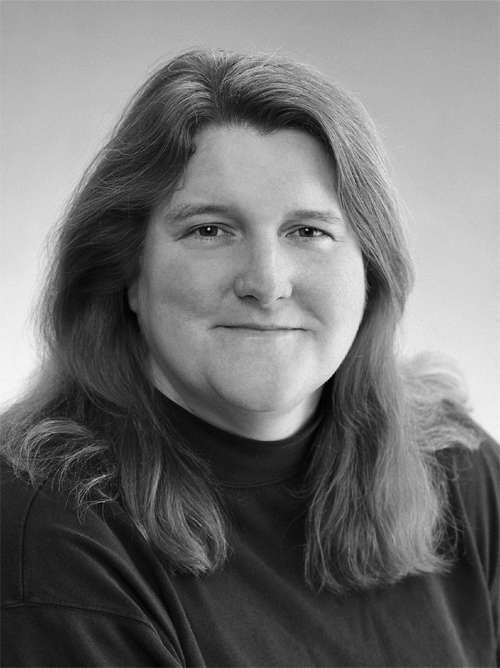
Dr. Lesli J. Wood is a Senior Research Scientist and Lecturer at the Bureau of Economic Geology in the University of Texas, Jackson School of Geosciences, where she directs the Quantitative Clastics Laboratory Industrial Associates program, and works with several excellent students. She teaches sequence stratitgraphy, seismic geomorphology, and seismic interpretation courses for industry, and has published numerous peer-reviewed publications, federal research reports, and university consortium documents pertaining to both shallow and deep water clastic systems, hydrates, martian sedimentology, and mobile shale basins. Dr. Wood holds B.S. in Geology from Arkansas Tech University, an M.S. in Geology from the University of Arkansas, and a Ph.D. in Earth Resources from Colorado State University.
2009 GORDON I. ATWATER BEST POSTER AWARDS
FIRST PLACE – 2009
“Magnetic Susceptibility Survey of Baton Rouge, Louisiana: Implications for Potential Heavy Metal Soil Contamination”
Hannah Vedrines, Carl Richter, and William H. Schramm
Hannah Vedrines

Hannah Lynn Vedrines was born to Christopher and Cheryl Vedrines in New Iberia, Louisiana, on September 16, 1986. She graduated from Catholic High School in New Iberia, Louisiana, in May 2004. In May 2008, she received a Bachelor of Science in Geology from the University of Louisiana at Lafayette. In the Fall of 2008, Hannah began graduate school at the University of Louisiana at Lafayette. In June 2009, she gave birth to her son, Jude, and continued her graduate education. While working towards a Master of Science degree, she worked part-time for a local oil and gas company and was a graduate assistant at the University of Louisiana at Lafayette. Upon completion of her Master of Science degree, Hannah hopes to secure employment as an environmental or petroleum geologist in the Acadiana area of Louisiana.
Carl Richter

Carl Richter is Associate Professor at the University of Louisiana at Lafayette and Head of the Department of Geology. He received his Ph.D. from the University of Tuebingen (Germany) in 1990, and spent the following three years as a research fellow at the University of Michigan to investigate magnetic anisotropies. In 1993, he joined the world’s biggest Earth science research program, the Ocean Drilling Program at Texas A&M University, where he was involved in a wide variety of oceanographic drilling expeditions for nine years. He sailed most of the world’s oceans in an attempt to understand our Earth’s past oceanographic and climatic history. While his main expertise is in geomagnetic methods and their application to geology, he is also interested in other geophysical methods, such as resistivity measurements. In 2002, Carl accepted a position at the University of Louisiana’s Geology Department and has enjoyed university life as well as the local culture since.
William H. Schramm
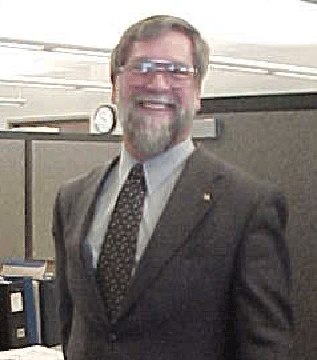
William H. Schramm is a 20 year veteran of the Louisiana Department of Environmental Quality. As a Geologist III he has worked closely with industry, consultants, and private citizens to investigate and/or remediated over 3,000 contaminated sites. His main focus is on groundwater issues throughout Louisiana. Since 2005, he has been an Adjunct Instructor on the staff of the Department of Geology at the University of Louisiana atLafayette and served on five Graduate Thesis Committees. Mr. Schramm holds a B.A. and an M.S. in Geology. and a Teaching Certification for K-12 in Science and Earth Science. He is a member and past Director, twice past Vice-President and President of the Baton Rouge Geological Society. He also serves on the Board of Directors of the Louisiana Environmental Health Association, and ComForCare Senior Services. Mr. Schramm is also completing his first term as Delegate to the American Association of Petroleum Geologists (AAPG), representing the AAPG members of the Baton Rouge Geological Society. He has participated in numerous conferences, conventions, and seminars as organizer, committee chair, session chair, judge, presenter, and author/coauthor with over 35 papers or abstracts in publication. His off time is spent raising foster children, doing carpentry, and trying to find time to travel with his wife Mary.
SECOND PLACE – 2009
“Jurassic Radiolaria in the Subsurface of the Northern Gulf of Mexico, Haynesville Formation, North Louisiana”
Ignacio Pujana, Nolan Shaw, Jr., and Patricia F. DuBois
Ignacio Pujana
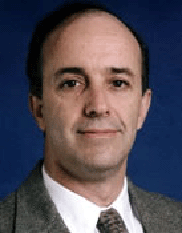
Ignacio Pujana obtained his Diploma in Geology (1985) from the University of Patagonia (UNPSJB) in Argentina, and his M.S. (1993) and Ph.D. (1997) from the University of Texas at Dallas. Ignacio is a Senior Lecturer and Researcher in the Department of Geosciences at the University of Texas at Dallas. His main research interest includes Mesozoic biostratigraphy and its relation to organic matter.
Nolan Shaw, Jr.
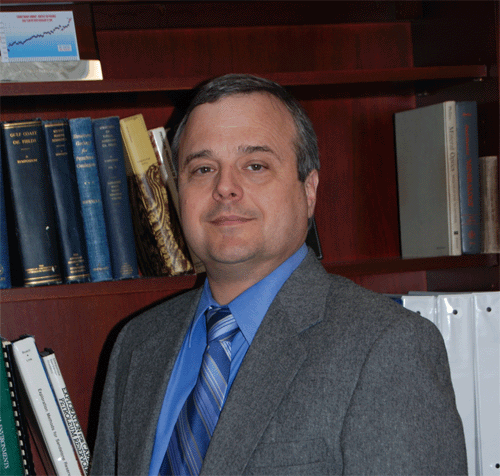
Nolan G. Shaw, Jr. graduated from Centenary College in 1975 with a B.S. degree in Geology. He is currently working as the Exploration and Geological Manager for J-W Operating Company out of Dallas, Texas.
Patricia F. DuBois
No photograph available as of press time.
Patricia Fay DuBois graduated from Washington University in St. Louis in 1994 with a B.S. in Computer Science and a B.A. in Geology. She pursued and obtained a Master’s degree from the University of Texas in Dallas in Structural Geology, with an emphasis on structural metamorphic petrology along fault zones. In 1994, she entered the oil and gas field as a geology-tech for several Dallas oil and gas companies, eventually joining Coho Resources, also in Dallas, as a Geologist and team leader of onshore exploitation for shallow and deep gas. She worked from 2001-2005 as a contract Geologist for various companies in Louisiana, Texas, and Missouri. In 2005, she joined J-W Operating as a Geologist, where she is currently working the Haynesville shale play.
THIRD PLACE – 2009
“Grain Size Distributions across the Northeastern Gulf of Mexico: A Field Exercise in Coastal Geology for Graduate/Undergraduate Oceanography Students”
Amy L. Spaziani and Gregory W. Stone
Amy L. Spaziani
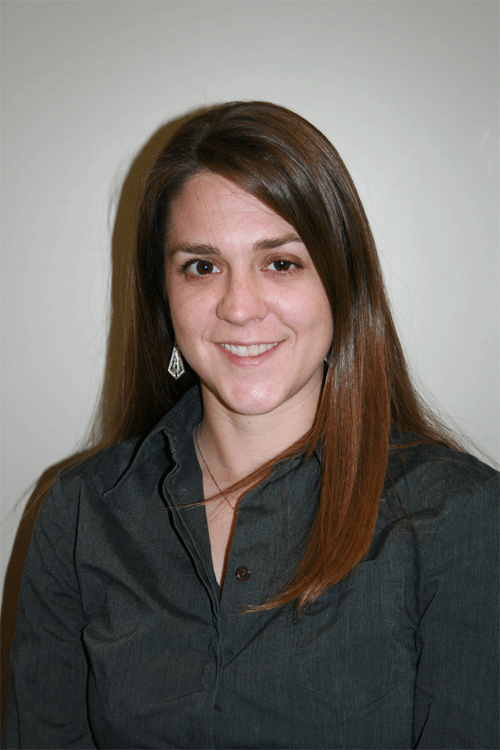
Amy Lynn Spaziani was born in Horseheads, New York. She attended Geneseo State University of New York (SUNY), where she earned a Bachelor of Arts in Geological Sciences and Political Science in May 2004, and was a member of the women’s varsity lacrosse team. Her undergraduate thesis focused on scarp development along Irondequoit Bay, Lake Ontario, New York. She worked at the U.S. Geological Survey (USGS) in Reston, Virginia, as an Environmental Careers Organization (ECO) Intern with the Eastern Earth Surface Processes Team. Her work at the USGS focused on identification of planktonic foraminifera from the Holocene Gulf of Mexico sediments. Following this position, Amy became the Education Assistant at the American Geological Institute (AGI), where she worked on Earth Science Week and high school environmental science curriculum testing. She enrolled at Louisiana State University in August 2006 to study coastal and marine geology under Dr. Gregory Stone. She will graduate with a Master of Science degree in Oceanography with a minor in Geology in May 2010.
Gregory W. Stone
No biography or photograph available as of press time.